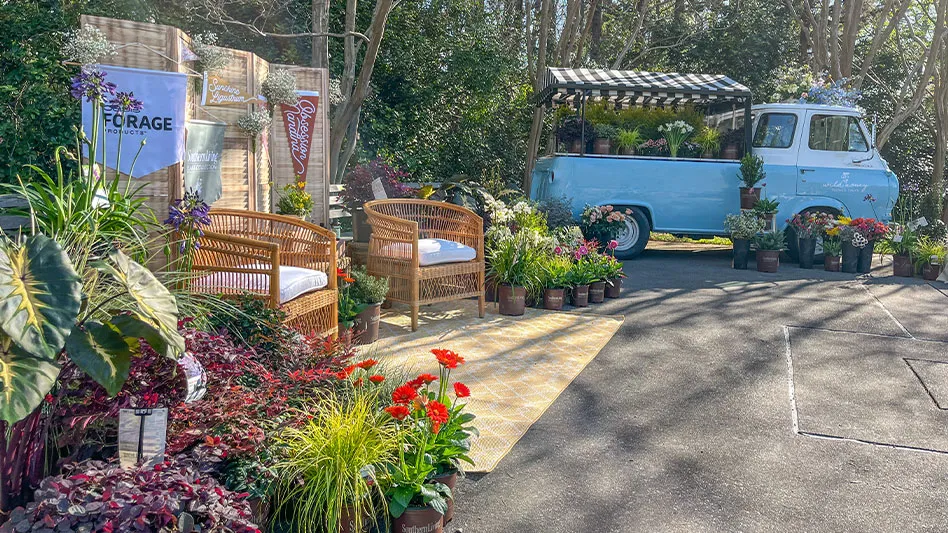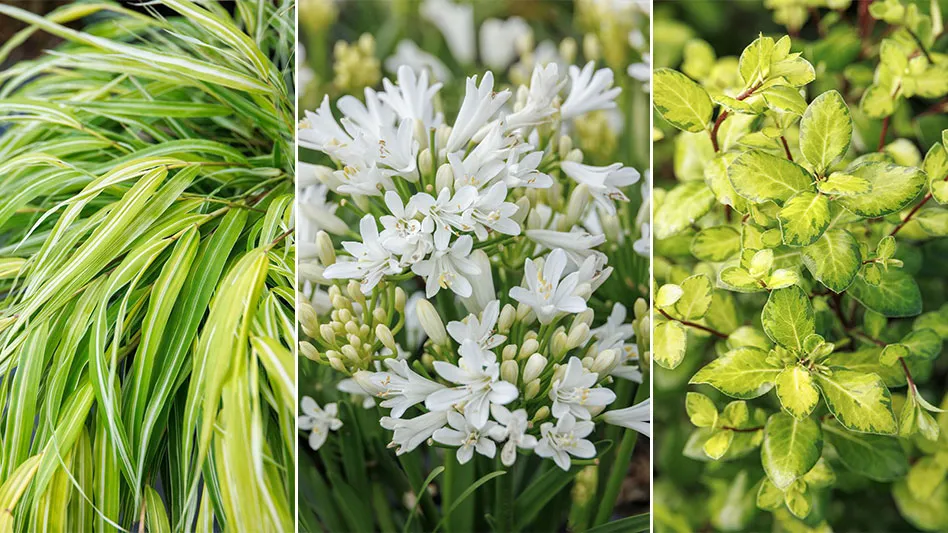Growers can free up valuable greenhouse space in spring by safely moving cool-tolerant plants outdoors early. This space can be refilled with another crop. In addition to saving growing space, plants grown at low temperatures harden off, which allows retailers to display plants outdoors earlier for a greater selection of plants for early-spring sales.
{sidebar id=58}
Finishing plants outdoors is not a new concept. For many years, growers have used cold frames, roll-out benches or put plants outdoors on black fiber cloth.
Determining hardy plants
With such a wide selection of annuals with different cultural needs, many growers do not know which plants are cold tolerant. Warm and cool crops are commonly grown and marketed together for late-spring sales.
Some companies are working to change the uncertainty about plant hardiness. PanAmerican Seed’s Pansy Pals program promotes annuals such as diascia, nemesia and snapdragon that can be grown and retailed with pansies.
Safely finishing plants outdoors depends on the genetic cold tolerance of the plants, the air movement around plants, how well plants are acclimated and how well the plants are maintained once outdoors.
The genetic cold tolerance of plants depends on where they originate. Tropical and subtropical warm crops such as alternanthera, angelonia,
Choosing, acclimating plants
Cool-tolerant crops include herbaceous perennials hardy in your region and selected vegetative and seed annuals. Pansy, phlox , alyssum, osteospermum, nemesia, calibrachoa, verbena, diascia, bidens, snapdragon, mimulus, lobelia and petunias are some cool-tolerant annuals to try.
Begin with a few plants for outside production and experiment with cultivars. Varieties of the same type of plant have varying degrees of hardiness. Learning which plants perform best will take some trialing.
Plants adapt best to lower temperatures when they have a well-established root system. To accomplish this, begin the crop cycle by growing plants at their optimum temperatures. Following guidelines from
Moving plants outdoors
Monitoring the weather forecast is important. As a guideline, avoid moving plants outdoors if a hard frost (colder than 28°F) is predicted at any point within at least three nights of when plants would be put outside. Minimum-recording thermometers are a wise investment for monitoring an outdoor production area.
When mild weather is predicted, move the plants outdoors and provide plants with adequate space to allow for good air movement. Avoid placing plants in low-lying areas because frost will more likely settle in these areas. Cold, dense air flows by gravity to the lowest areas where it collects.
Challenges of outdoor growing
Botryis and lack of fertilizer are two common problems with outdoor growing. To prevent Botrytis, water plants in the morning and let the foliage dry before night. Plants growing outdoors may require less water and this means that plants are fertilized less often. Although plants are being grown cool, it is important to continue to fertilize plants and maintain proper fertility. Pay particular attention during rainy periods and monitor plants for both Botrytis and nutrient leaching.
Low growing media temperatures also increase the risk of root rots caused by Pythium, Rhizoctonia and Thielaviopsis. Monitor roots regularly for disease and apply fungicides early. Fungicides work more slowly in cool growing media. It may take longer to see results or applications may be less effective.
Be prepared to cover plants if temperatures go below 28°F. An overwintering thermal blanket can be used.
Frost injury
Occasionally plants grown outdoors are damaged by low temperatures. Damage to plants at temperatures below freezing is called “frost” or “freezing” injury. Frost injury occurs when ice crystals form inside the plant tissue.
The temperature at which freezing occurs depends on what extent the plants have hardened. Hardening involves both avoidance and tolerance of freezing. Plants with symptoms of frost injury wilt. Damaged tissue is water-soaked and turns dark brown or black.
Plants can also be injured by temperatures above freezing. This is called “chilling injury” and occurs primarily on tropical or subtropical plants. Plants with chilling injury usually wilt severely and do not recover.
Once frost injury occurs, not much can be done. Depending on the extent of the damage, injured growth can be cut back and plants may grow out.
Growers can use dew points to estimate how quickly the temperature might drop during the night and use overhead sprinklers to prevent frost injury. When the water comes in contact with the plants, it begins to freeze and releases heat. As long as a thin layer of water is present, on the flower or on the ice, the flower is protected. It’s the water constantly freezing that keeps the temperature above the critical point. However, container-grown herbaceous plants are susceptible to breakage due to the weight of the ice and the excessive amount of water and cold, wet roots would cause other problems.
Minimizing risks
Here are two ways to minimize frost risks.
Roll-out trays or benches. Growing space can be doubled by placing one layer of plants on a heated floor and a second layer 20-30 inches above the floor on a rack system. During the day, the trays can be rolled outside the greenhouse onto a matching pipe network. Both crops receive full sunlight. At night, they can be rolled back into the greenhouse for protection. This system can be adapted to both hoop and gutter-connected houses. This system is also good for hardening off bedding plants during spring and for potted plant production in fall.
Cold frames. A cold frame is a rectangular box with its back higher than its front, covered with a transparent roof. The temperature difference between the inside and outside of the frame is generally not more than 5°F-10°F. A mat or blanket may be placed over the frame on cold nights to conserve heat.
Often the temperature inside and outside of the cold frame may differ by only a few degrees. These degrees can be very important in preventing cold injury.
Cold frames should have a southern exposure to receive the maximum amount of sunlight. The site should have good natural drainage so there is no excess moisture beneath the bed. When ventilating, raise the top on the side opposite that from where the wind is blowing.
{sidebar id=1}
- Tina Smith
April 2008
Latest from Garden Center
- The Family Business, Part 2: Agreeing (and disagreeing) on Capital Investments
- Registration opens for Darwin Perennials Day
- Weekend Reading 5/3/24
- Weekend Reading 4/26/24
- Smith Gardens assumes operations of Skagit Horticulture
- Beneficial insect sachets now included with Monrovia mandevilla
- Pennsylvania Horticultural Society shares top gardening trends from 2024 Philadelphia Flower Show
- Garden Media Group announces the fifth annual Women in Horticulture Week





